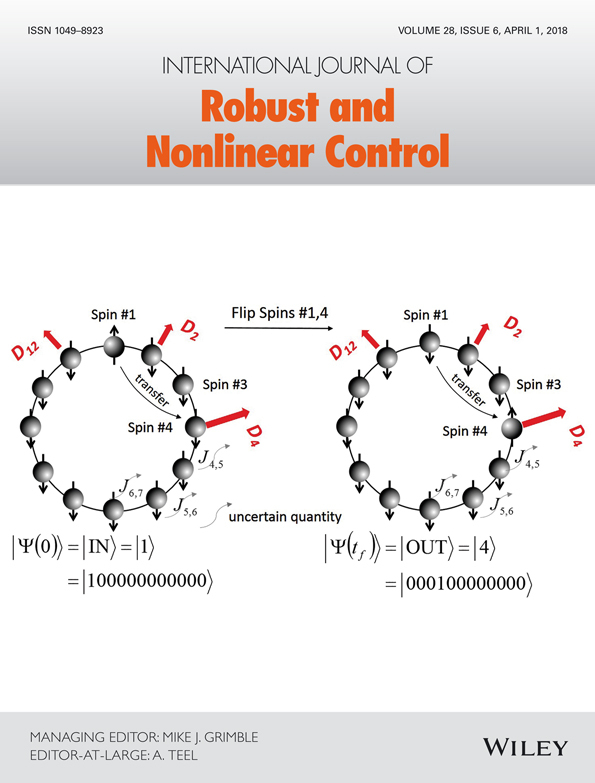Distributed stochastic MPC for systems with parameter uncertainty and disturbances
Summary
A distributed stochastic model predictive control algorithm is proposed for multiple linear subsystems with both parameter uncertainty and stochastic disturbances, which are coupled via probabilistic constraints. To handle the probabilistic constraints, the system dynamics is first decomposed into a nominal part and an uncertain part. The uncertain part is further divided into 2 parts: the first one is constrained to lie in probabilistic tubes that are calculated offline through the use of the probabilistic information on disturbances, whereas the second one is constrained to lie in polytopic tubes whose volumes are optimized online and whose facets' orientations are determined offline. By permitting a single subsystem to optimize at each time step, the probabilistic constraints are then reduced into a set of linear deterministic constraints, and the online optimization problem is transformed into a convex optimization problem that can be performed efficiently. Furthermore, compared to a centralized control scheme, the distributed stochastic model predictive control algorithm only requires message transmissions when a subsystem is optimized, thereby offering greater flexibility in communication. By designing a tailored invariant terminal set for each subsystem, the proposed algorithm can achieve recursive feasibility, which, in turn, ensures closed-loop stability of the entire system. A numerical example is given to illustrate the efficacy of the algorithm.




